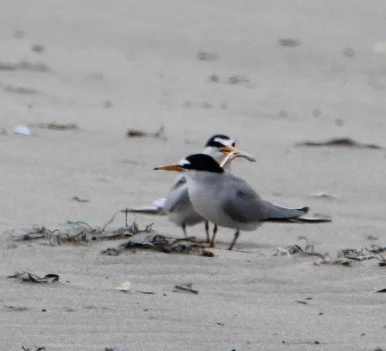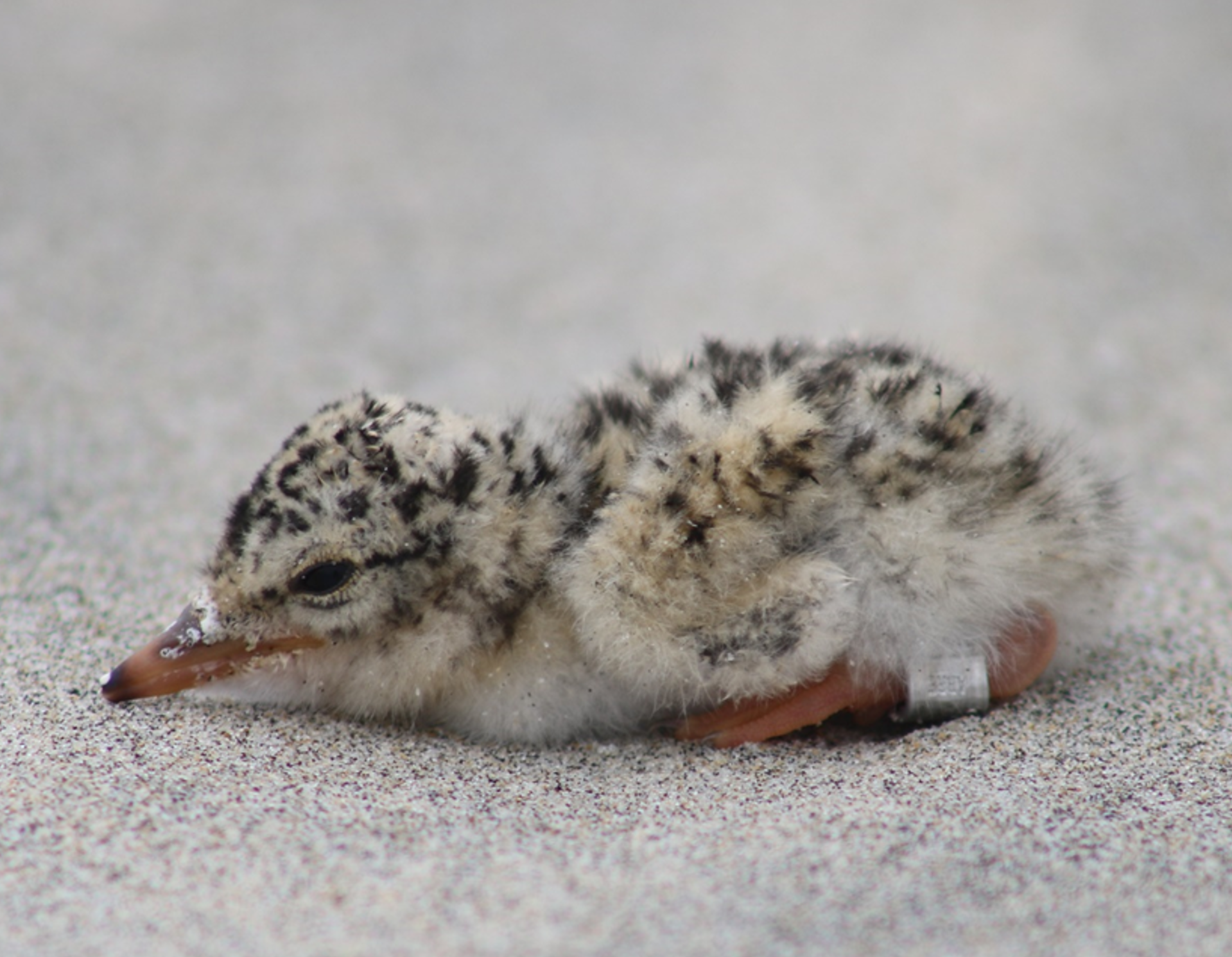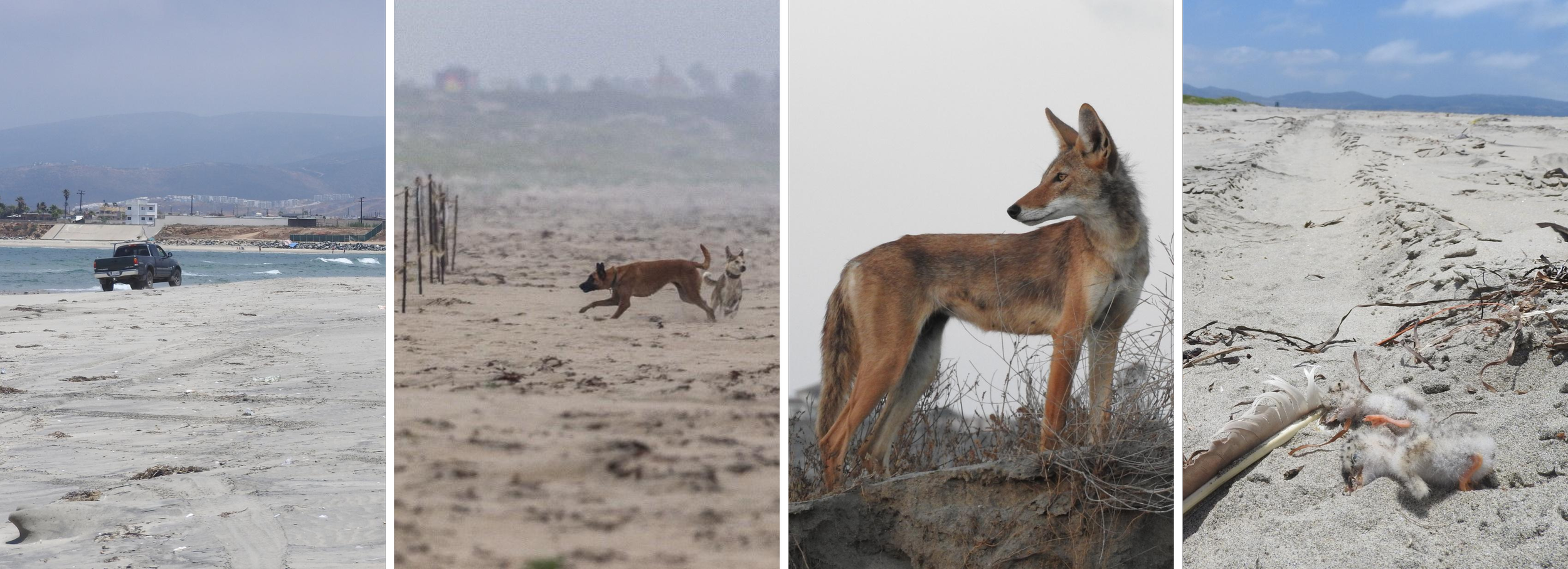Least Tern: a story of resilience on the coasts of Ensenada (2025 breeding season summary)
By Liliana Ortiz-Serrato / Pro Esteros
Every year during spring and summer, the smallest of the tern species, the Least Tern, arrives on our shores. This small migratory seabird undertakes a long journey of thousands of kilometers from its wintering grounds in the Central Pacific to Northwestern Mexico, with a single purpose, to nest and raise its chicks. One of the places it chooses to do so is the Estero de Punta Banda, where it finds the ideal refuge to continue its life cycle.
Least Tern pair
The Least Tern chooses to nest on sandy beaches with little or no vegetation, generally close to coastal wetlands. In the Estero de Punta Banda, these birds begin to arrive at the end of May and beginning of June, beginning their reproductive season, which lasts until the end of August.
During these three months, the quiet beach is transformed into a vibrant scene: terns fill the air with their calls, display elegant courtships and bravely defend their nests. From above, they do not hesitate to dive to scare away any intruder that they consider a threat to their eggs or chicks—whether crows, seagulls, herons, coyotes, dogs or even humans.
The time it takes for Least Tern eggs to hatch is between 21 and 23 days. Once the chicks are born, both parents are responsible for relentlessly feeding them small fish, ensuring that they grow healthy and strong. After about three weeks, the chicks—now fledglings—begin to take their first flights and practice fishing, although at first without much success. When they are finally strong enough, they undertake their first great journey with their parents, migrating to the warm seas of Central America, where they will spend their first three years of life before returning to the Mexican coasts to repeat the cycle. When they reach sexual maturity, young Least Terns undertake the return journey to Northwestern Mexico for the first time, in search of a place to breed. Many return to the place where they were born, while others choose nearby beaches to establish their nests.
Newly hatched Least Tern chicks are very vulnerable. Unlike Snowy Plovers, they aren’t able to walk about right after hatching
During the 2025 season in the Estero de Punta Banda, 31 breeding pairs of Least Tern were recorded. Of them, five lost their first nest due to extraordinary tides that flooded part of the colony. However, in a great example of resilience, they tried again and built a second nest in a safer location.
In total, 61 nests were counted, of which 30 corresponded to renestings of pairs that had lost their nest once or even twice. Of these, approximately 10 nests achieved hatching success, although only three chicks were recorded that reached the fledgling stage. This suggests that many of the chicks were preyed upon or abandoned before completing their development.
Despite Pro Esteros' conservation efforts, such as the installation of a temporary fence to prevent vehicles from entering the nesting area, the presence of canids (dogs or coyotes) and predation of some nests were detected. Predation of chick by the Baja California coachwhip (a native snake) and the common crow was also documented. In addition, three adults were recorded having been preyed upon, possibly by the peregrine falcon, a species observed repeatedly in the colony and associated with evidence of hunting.
Vehicles driving on the beach, dogs without leashes, and coyotes are great threats to nesting Least Terns and their chicks.
The 2025 season presented various challenges and threats for the Least Tern: extraordinary tides that flooded the nests, the presence of natural predators and, of course, human interference, especially from people who enter the nesting areas with their dogs.
There is still much to do to protect this species. Promoting respect for natural areas and keeping pets always on a leash is a simple but crucial action. What may seem like harmless play to a dog can mean the loss of a nest or the life of a chick. Every small gesture counts to ensure that these birds continue to return to our shores year after year.



